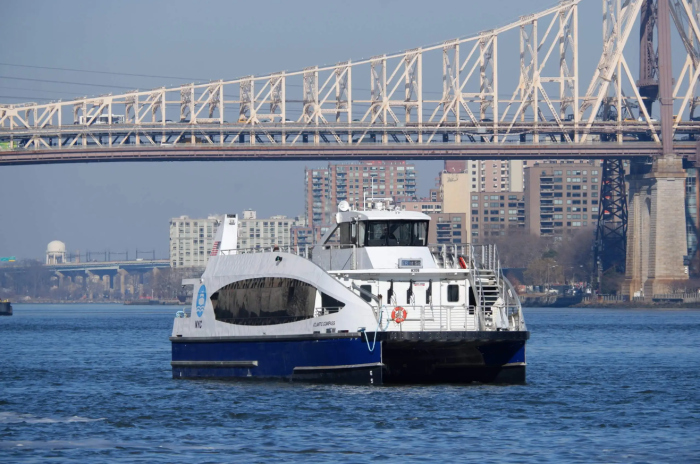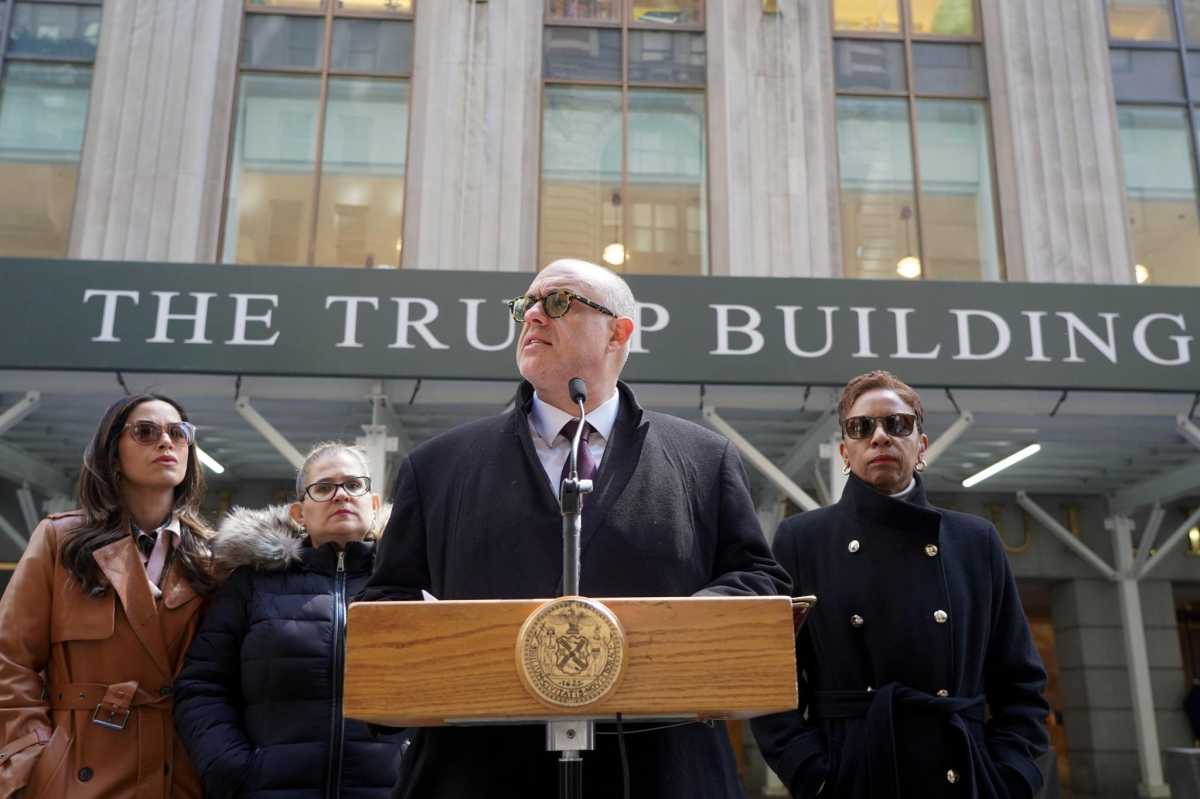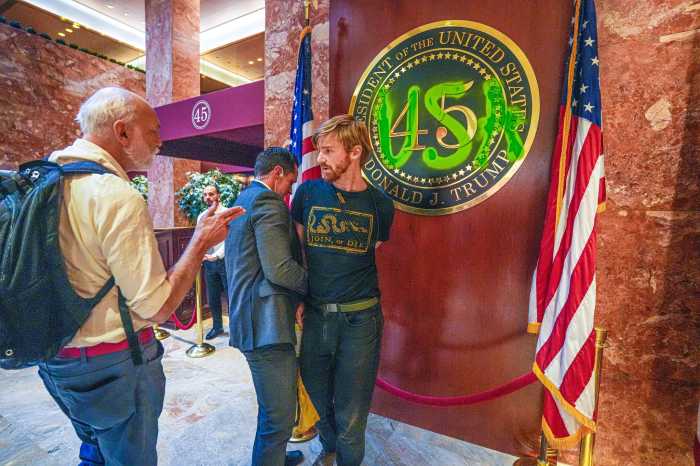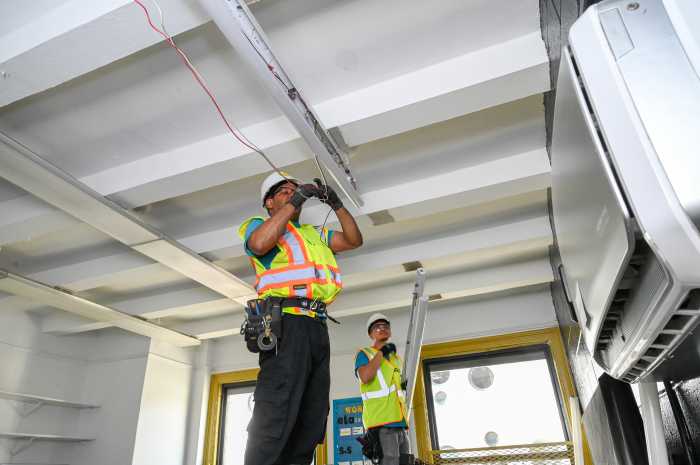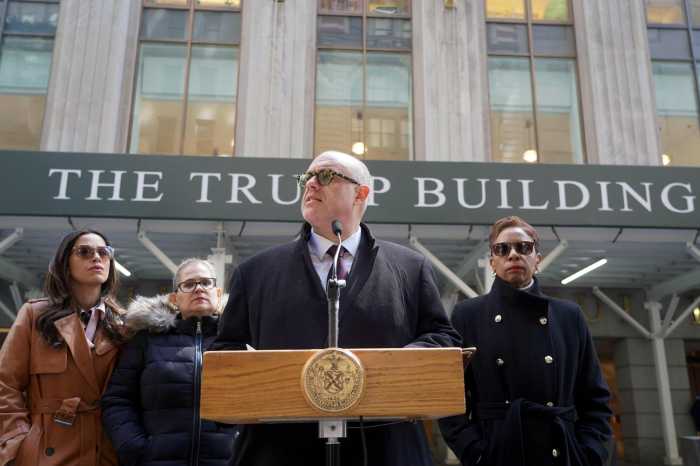
New Yorkers may one day find themselves telling their children and grandchildren about the era of ordering food from an actual human, a new study on automation suggests.
About one in 10 city jobs could be largely automated with existing technology, meaning at least 80 percent of their tasks could be currently handled by machines, according to an analysis set to be released Monday by the Center for an Urban Future.
The thinktank pulled automation potential data compiled by the McKinsey Global Institute for more than 800 occupations and applied it to the city’s economy. The center found that relatively few jobs — maybe 7,000 — could be entirely eliminated, but that automation could dramatically alter positions at a slew of businesses, from Applebee’s to accounting firms.
“It’s not just factory floors, it’s coming for office towers; it’s coming for trading floors; it’s coming for restaurants; it’s going to pervade every corner of the city’s economy,” said Matt Chaban, the report’s author. “The good news, at least, is that we are much better off than other places when it comes to automation.”
The center’s report estimated 39 percent of professional tasks performed in the city have a high likelihood of being automated, whereas that statistic climbs to 51 percent nationwide.
The city is fortunate that few workers are employed in professions that could be nearly completely automated, such as ophthalmic lab technicians and sewing machine operators, Chaban said.
On the downside, vulnerable professions poised for big changes tend to be filled by lower-wage workers with fewer opportunities, according to the study. This includes some 55,040 bookkeeping, accounting and auditing clerks; nearly 60,000 fast food servers and cooks; as well as stock clerks, waiters and computer support specialists, the analysis found.
All this is to suggest the city’s education system and job training initiatives should better stress career adaptability and new technology, Chaban said.
“Things are changing so rapidly that it will be just as difficult for educators to adapt as it will be for workers, but that’s why we think it is so incumbent,” Chaban said.
The city’s current jobs plan focuses on cyber security, life sciences and virtual and augmented reality, fields the city expects to grow and to provide opportunities for workers with varying levels of education, according to Anthony Hogrebe, a spokesman for the city’s Economic Development Corporation.
Although it would be shrewd for city leaders to watch automation trends, the Center for an Urban Future analysis may be overly pessimistic, according to Patrick Anderson, principle and CEO of Anderson Economic Group, LLC. Anderson said the research suffered from the “barista paradox,” where it only looked at what could be automated — say, preparing coffee — and not whether consumers have shown a preference for the automation in question.
“Millions and millions of Americans walk into coffee chains like Starbucks, where they have a real person make them a cappuccino,” Anderson said. “People want high-touch, personal interaction with a large number of things in their life, particularly food, fashion, personal guidance, and those are exactly the items that are unlikely to be automated out of existence.”
Restaurants, however, have been using baristas less and finding other ways to consolidate personnel hours, such as no longer hand cutting French fries and trying out self-ordering kiosks, according to Andrew Rigie, executive director of the city’s Hospitality Alliance, which represents restaurants and bars. Rigie said most venues would prefer to rely on workers, but are struggling to contain costs with new wage, scheduling and benefits mandates and increasing rents.
Rigie suggested the government focus on opportunities that are emerging with the “professionalization” of restaurants and training workers to prepare menus that would be hard for a machine to mimic.
“You have marketing jobs, human resources jobs, finance jobs,” Rigie said. “There’s more complex dishes that require humans to cook, so more culinary training.”
New York State Society of Certified Public Accountants has been crisscrossing the state, advising firms to consider diversifying and offering services like financial planning, since computers are now able to do in minutes what once took staffers hours, according to its president, Harold Deiters. But Deiters views the new innovations as an exciting opportunity for the industry to grow.
Charles Weinstein, CEO of the EisnerAmper accounting firm, said the company has been using artificial intelligence to read hundreds of contracts and summarize key takeaways. But he is not concerned about the innovation leading to staffing reduction.
“We won’t need to expand our workforce to serve more clients,” Weinstein said. “And our staff can focus on the differences or offering suggestions on how to structure contracts and so on. I think it’s actually a higher level of work, more engaging for the staff.”
Chaban and others noted that the tech boom will continue to bring new jobs. For instance, the Fire Department currently deploys drone operators, which would have been unfathomable a few years ago.



